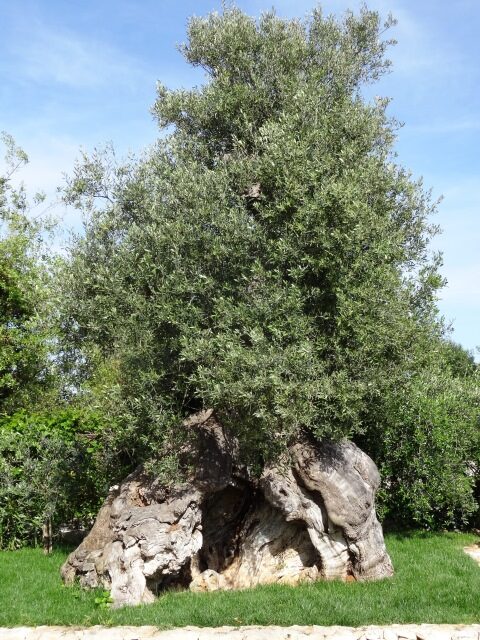Almost as soon as we entered Puglia (or Apulia, as it is known in English) from Campagna, we noticed two things: the landscape, while still beautiful, had gotten flatter–and it was filled with grape vines and olive trees.
And some of those olive trees looked really, really old. “How old,” I asked Dan, “do you think those trees are?”
“I’d guess really old,” he said. “Maybe two or three hundred years.”
The charming and peaceful Masseria Salinola in Ostuni, where we are staying, has some of these old trees on its property, so I asked our host Daniele how old the trees are.
“These here,” he said, “are at least one thousand two hundred, or maybe two thousand years old. But the oldest trees in Puglia are three thousand years old, maybe more.” It is very strange, as I write this, looking at a tree that was probably a young sapling when Jesus was alive.
“Did you know,” Daniele continued, “That Italy produces the most olive oil of any place in the world? And forty percent of Italy’s olive oil comes from Puglia.”
Olive trees self-seed when left wild. If you think about it, this is not surprising. That pit inside the olive is, after all, a seed. All it takes is the right terrain and the right climate, and both of them are right here in Puglia. The original people of this region harvested the olives from the trees wherever they happened to grow. But the Romans, when they arrived in the region, did what the Romans seemed to naturally do–they arranged the trees in rows.
The olive oil of Puglia is good beyond all reason. As are the olives. We’d love to take some home…if only we weren’t already laden with some five bottles of wine… more liquid than we can really carry onto the plane, and only two days left to drink some of it down…

